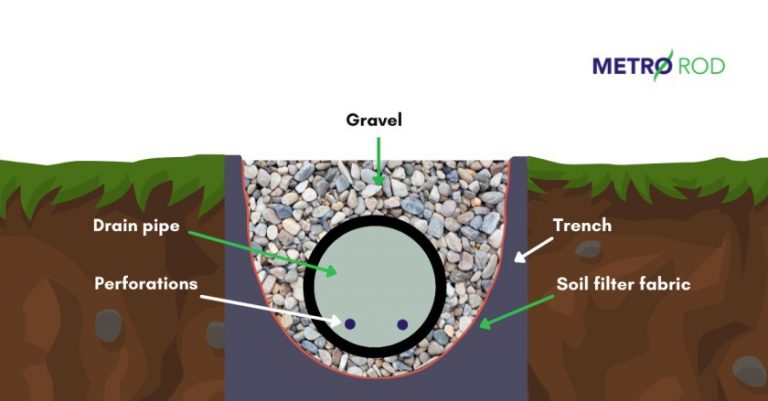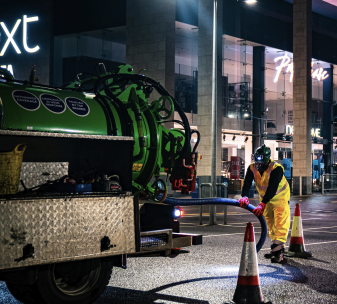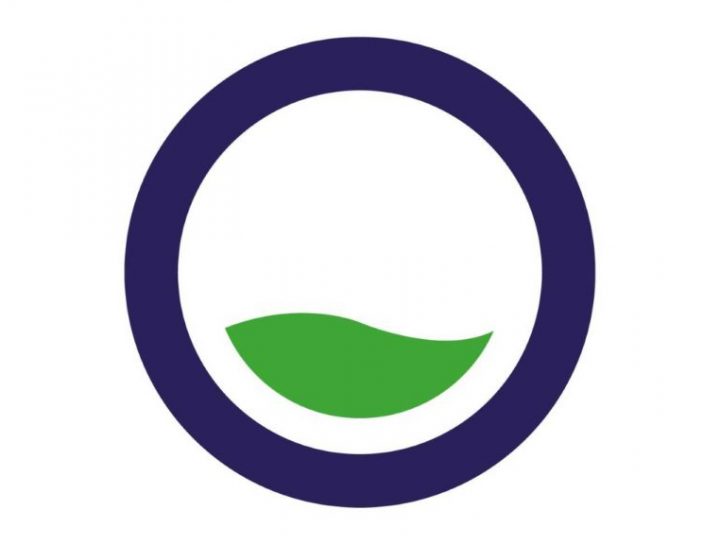Adverse weather, like storms or heavy rainfall, can often lead to gardens becoming waterlogged. Although water provides nutrients to help plants grow, too much of the substance can cause significant problems to your vegetation.
Typical Symptoms of a Waterlogged Garden
Numerous puddles, squelching noises when you walk on the surface of your lawn, and moss growth are common symptoms that your garden has difficulty draining excess surface water. Although these signs are pretty simple to identify, the causes of a waterlogged garden aren’t always that apparent.
A few reasons why your garden is drenched in excess surface water include:
- The surface of your garden is uneven, enabling water to collect
- Your garden’s soil has become compacted, preventing water from draining away easily
- Your house and garden are built on clay soil
- Your gutters have become blocked, resulting in an overflow of water that seeps into your garden
If your garden is constantly becoming waterlogged after heavy downpours, you may want to consider installing a garden drainage system.
What’s the Purpose of Garden Drainage Systems
Garden drainage is a common issue in the UK because many houses are built on clay soil. Clay soil contains tiny particles which effectively form a water-resistant layer that prevents water from flowing through. Soil composition is essential for garden drainage, as water needs space within the soil to drain away smoothly. When water cannot flow, it will start to build up, causing your garden to become waterlogged.
The primary use of garden drainage systems is to prevent surface water from accumulating leading to vegetation and property damage or flooding. Most garden drains consist of two essential functions, absorbing surface water and releasing it into the surrounding soil.
Benefits of Garden Drainage Systems
There are several reasons why you should consider installing a garden drainage system, including:
Prevent soil erosion
During heavy rainfall, the particles within your soil can often become displaced, causing it to deteriorate over time. This is commonly referred to as soil erosion. By installing a garden drainage system, you can prevent surface water accumulation and protect your soil from eroding.
Minimise water damage
Excess surface water can lead to the roots of your plant life becoming damaged. Furthermore, if surface water cannot drain away from your garden, there’s a chance it will seep into the foundations of your property, leading to a build-up of excess moisture. This can result in dampness and mould, which will slowly deteriorate your property’s flooring, walls, and other structural aspects.
Decrease surface water build-up
In addition to causing structural damage to your garden, surface water buildup can lead to many health hazards. Not only does water pooling result in a dangerous slippery surface, but it also provides the perfect environment for bacteria and mould to grow.
Types of Garden Drains
Before installing a garden drainage system, you should consult your local water authority before any work occurs. The reason is, most water authorities do not permit surface water into foul drainage systems because this adversely affects local water authority sewage treatment plants. If your garden drainage system connects to foul drains, you could be fined.
When it comes to garden drainage systems, there are several types you can choose from:
Simple ditches
The easiest and most cost-effective garden drainage system is the simple ditch. A Simple ditch involves digging a hole with sloped sides. Large stones are then added to each side for support, and smaller ones are placed at the bottom of the ditch.
Soakaways
The purpose of a soakaway is to store surface water and gradually release it into the surrounding earth. Soakaways are placed underground at a certain point in your garden. Although soakaways can be as simple as a hole filled with rubble, the best type to use are soakaway crates. Soakaway crates are made of plastic and can be constructed into different sizes.
French drainage systems

Soakaways are a valuable garden drainage system that are often fed by French drains. French drains effectively collect surface water from the surrounding ground and disperse it to the soakaway, ditch or watercourse. French drains typically consist of small perforated pipes which capture the surface water and direct it to the soakaway area and their trenches are sloped to help the surface water reach the outfall.
Herringbone drains
Herringbone drains are similar to french drains in that they have sloped trenches that carry surface water to the soakaway area. However, where herringbone drains differ is that they require more channels which make a herringbone pattern. This drainage system is helpful for gardens that are unusual or aren’t very level.
Contact a Garden Drain Unblocking Specialist
Many garden drainage problems occur due to surface water not being able to drain away efficiently. If you believe you have a blocked garden drain or require advice on the best drainage system to install in your backyard, contact your local Metro Rod depot today.

Talk to your local Metro Rod specialist
We are always happy to arrange a free site assessment and no obligation quotations for any work you might need. Alternatively, you can call our emergency hotline number on 0800 66 88 00
Get in touch Drainage Services

